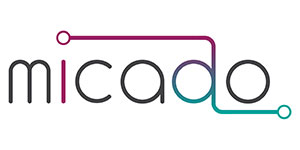
16 Apr MICADO: better integration through innovation
MICADO: better integration through innovation
The European MICADO project (an acronym of Migrant Integration Cockpits and Dashboards) is developing an interactive application to ensure a better welcome and integration of newcomers. Mohammad Rafi Azizi (intercultural mediation) and Jolien De Crom (CURANT) participated in the co-creative workshops on behalf of the City of Antwerp.
The local governments, universities and IT specialists of the cities of Antwerp, Bologna, Hamburg and Madrid have joined forces to develop a user-friendly digital tool for newcomers. They started by analysing the needs of their target audience. Field workers provided valuable input during co-creative workshops. Which ideas did Mohammed and Jolien contribute to MICADO?
“A digital tool for newcomers mainly has to be accessible and reliable.”
Mohammad Rafi Azizi: “Newcomers have to take care of various matters when they leave the asylum centre, including making arrangements for a home, a new address, an e-ID, or an integration course. Everything in Belgium is different, compared with your country of origin. I arrived in Belgium in 2010 from Afghanistan. Because I spoke such good English, I was asked to work as an interpreter and assist other refugees. That’s how I found out about the Flemish public employment service, the national employment office, Atlas… Other newcomers find Belgium a lot less easy to navigate when they arrive.
A digital tool for newcomers mainly has to be accessible. Newcomers need to information quickly about all the themes that are related to integration including housing, health, education, employment, administration… Creating pictograms and imagery for these themes, with information in their own language, would definitely help them along.”
“We stimulate the integration process by ensuring that information pertaining to integration is always just a tap away.”
Jolien: “Newcomers get a lot of information in the asylum centres. But sometimes, questions about integration only come later. Housing is not important for example as long as the newcomer does not have a residency permit.
That is why having an integration tool that is always available would be such an advantage. As an extra, not as a replacement of the existing assistance and guidance. Does the newcomer want to look up information related to integration? He or she should be able to do this on the spot. It’s another way of stimulating their integration.
It is vital that the information remains up to date. Otherwise the new system will immediately loose of all of its credibility. The MICADO project should definitely strive to avoid this. The objective should be to earn credibility from the target audience. Once the new tool is ready, we need to make an effort and publicise it in places that offer services to asylum seekers. We should definitely organise information sessions about this tool in the asylum centres, at Atlas, at Integration…”.
“Did you know that the technology for instant speech translation already exists?
Jolien: “We were joined by various aid workers during the co-creative sessions. I noticed that we often deal with the same obstacles when it comes to the integration of newcomers. In Antwerp, many of the integration issues in Antwerp are no different from those of other cities. We can use the basic principles of this tool anywhere in Europe. Over time, cities will be able to fine-tune this tool to match the services they offer.”
Mohammad Rafi Azizi: “One of the biggest obstacles to people’s integration is language. When you go to the town hall, they expect you to communicate in Dutch. Not everyone has a network or personal interpreter to solve this issue. Did you know that the technology for instant speech translation already exists? MICADO is studying the latest technology for its new tool. Because it may make a world of difference for the integration of newcomers in the future.”
Further information?
John Steyaert
john.steyaert@antwerpen.be
tel. + 32 (0)3338 61 71
